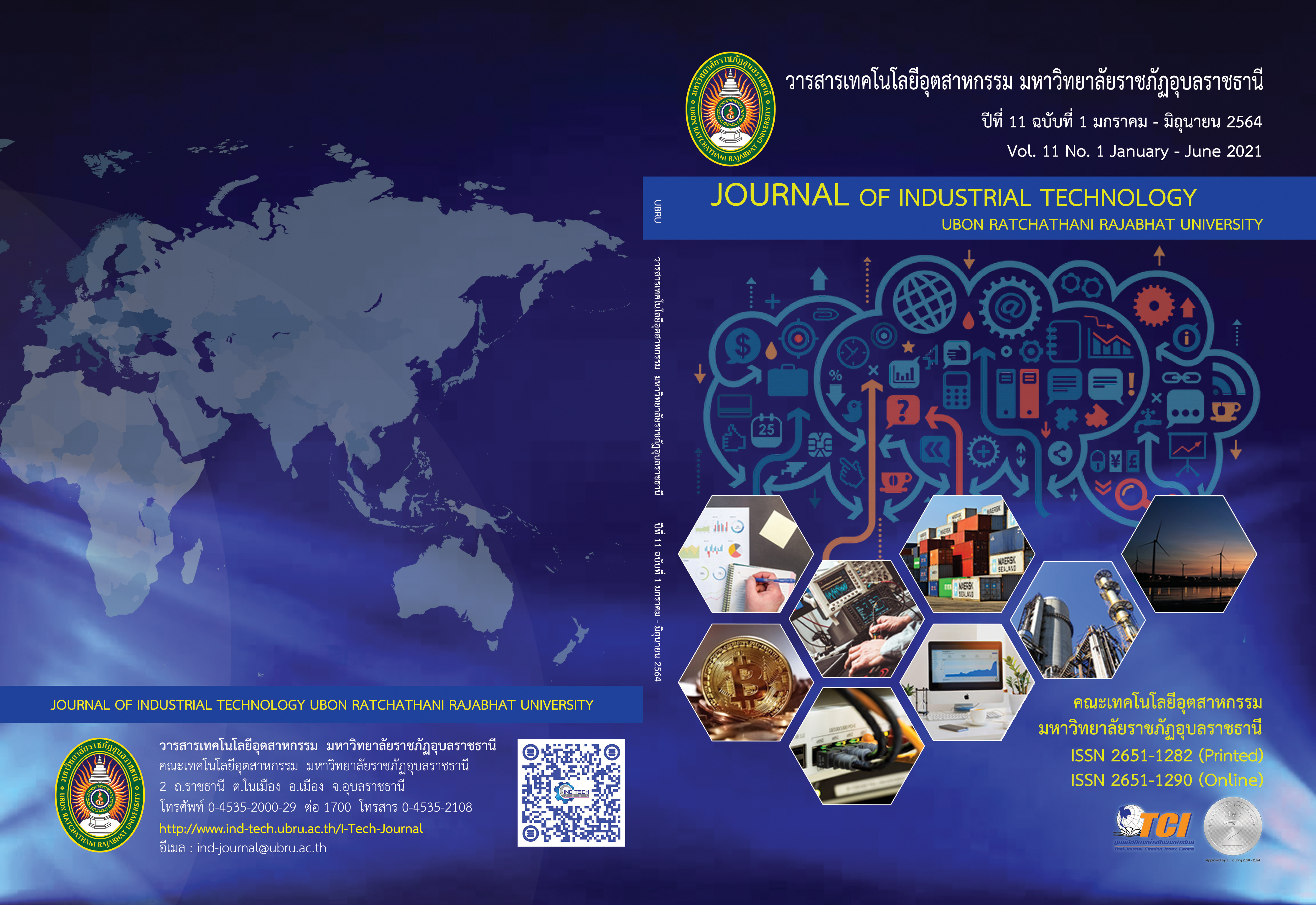Analysis of risk factors for dengue hemorrhagic fever
Main Article Content
Abstract
This research aims to study the risk factors associated with dengue hemorrhagic fever.
The data were obtained from the thesis title is Aedes larval distribution in Thailand. The 8,245 records of data composing of container type, water level, lid status, lid type, container color and risk for dengue hemorrhagic fever. We used the data with a total of five factors to analyzed the suitable factors using regression analysis to consider the significant relationship between container factors and risk factors for dengue hemorrhagic fever. From the regression analysis, we found that all of five factors including container type, water level, lid status, lid type and container color were statistically significant effected to the risk for dengue hemorrhagic fever (P<0.05). Then, K-means Clustering is used to determine what factors are in the same cluster by performing 100 K steps to find the best group. It was found that the number of two best groups of data were analyzed, i.e. risk and non-risk with a data accuracy of 66.8%, it means that the model is used to find the relationship for the next step. Additionally, grouped by K-means algorithms used to find the relationship with the Apriori algorithm. We found the confidence interval is 0.95 with a total of 131 rules, the results from each group were not different such as if using a plastic container with a lid on water there is no risk or if the container is black and there is no cover, there is a risk of dengue fever, etc.
Article Details

This work is licensed under a Creative Commons Attribution-NonCommercial-NoDerivatives 4.0 International License.
Articles published in Journal of Industrial Technology Ubon Ratchathani Rajabhat University both hard copy and electronically are belonged to the Journal.
References
Bumrungrad International Hospital. 2018. dengue hemorrhagic fever. [Online]: https://www.bum rungrad.com/th/conditions/dengue-hemorrhagic-fever (in Thai)
Bangkokbiznews 2018. Against dengue hemorrhagic fever. [Online]: http://www.bangkokbiz news.com/pr/detail/29735. (in Thai)
Sermkarndee P, Manwicha J, Khunchoo R. Risk Areas Analysis of Dengue Fever Using Geographic Information Systems, Hatyai District, Songkhla Province. Hat Yai National and International Academic Conference. 2016; (7): p. 1355-65. (in Thai)
Seuyam T. Hazards dengue fever during the rainy season. [Online]: https://www.ry t9.com/s/ iq01/2869467; 2018. (in Thai)
Office of the Health Promotion Foundation. 2561. Domicile of people with dengue fever. [Online]: http://www.thaihealth.or.th/Content/41872- ConcernedDHF.html. (in Thai)
Phipathananunth C, Jalearnrat S. Socio-Economic Household Data Analysis Using the Clustering and Association Technique for Data Mining. NIDA Development Journal. 2016; (3). (in Thai)
Nuankaew W, Nuankaew P, Budsaman S, Thanasiratham P. A Comparative Model of Cultural Tourism in the North and the Northeast of Thailand. Management Journal Information technology and innovation. 2017; (2): p. 26-38. (in Thai)
Vongpipan T. Lease Approval Using Data Mining Techniques. Department of Computer and Communication Technology Faculty of Engineering, Dhurakij Pundit University; 2013. (in Thai)
Kajornkasirat S, Chanapai N, Hnusuwan B. Smart health monitoring system with IoT. 2018 IEEE Symposium on Computer Applications & Industrial Electronics (ISCAIE). Penang, Malaysia; 2018. 206-11.
Exarchos TP, Rigas G, Bibas A, Kikidis D, Nikitas C, Wuyts FL, Ihtijarevic B, Maes L, Cenciarini M, Maurer C, Macdonald N, Bamiou DE, Luxon L, Prasinos M, Spanoudakis G, Koutsouris D, Fotiadis DI. Mining balance disorders' data for the development of diagnostic decision support systems. Computers in Biology and Medicine; 2016. 77: 240–8.
Jianguo Chen, Kenli Li, Huigui Rong, Kashif Bilal, Nan Yang, Keqin Li. A disease diagnosis and treatment recommendation system based on big data mining and cloud computing. Information Sciences; 2018. 435: 124–49.
Buathong W. Clustering: K-means. [Online]: https://wipawanblog.files.wordpress.com/2014/06/ chapter-8-clustering-K-means.pdf; 2014. (in Thai)
Ekasit Patcharawongsakda. Introduction to Data Mining and Big Data Analytics. [Online]: http://dataminingtrend.com/2014/; 2017. (in Thai)
Waewkratok C, Yangkratok S, Apinandecha C. Factors correlated to role of community leader in prevention and control Hemorrhagic fever in Pongdang Sub-District, Kham Talasor District, Kakhonratchasima. National Academic Conference and Research Presentation. 2017; (3): p. 426-34. (in Thai)
Intasri C, Sarawong P, Palitnonkert A and Eamjoy D. Factor related to dengue hemorrhagic fever prevention of people in Bankongbangna, Srisajorakeanoi, Bang Saotong district, Samutprakan province, Thailand. 2017; (3): p. 43-51. (in Thai)
Wongkoon S. Aedes larval distribution in Thailand [thesis]. Nakhon Si Thammarat: Computational Science. Walailak University; 2011.
Shehroz S.K. and Amir A. 2013. Cluster Center Initialization Algorithm for K-modes Clustering. Expert Systems with Applications. 40(18): 7444–56.
Department of Medical Sciences, Ministry of Public Health. 2562. Mosquito Biology and Ecology. [Online]: http://webdb.dmsc.moph.go.th/ifc_nih/a_nih_1_001c.asp?info_id=1366. (in Thai)
Khanthikun N, Suwannakerd W, Seajeng A, Sudathip P, Thipmontri R, Chaoprom S. Forecasting patterns of dengue fever in 8 northern provinces of Thailand. [Online]: http://irem2.ddc.moph.go.th/ researches/download/files/4803; 2012. (in Thai)
Promprao S, Ratmanee Y, Kaikaew J. Ecology of Aedes Mosquitoes in Kreang Sub-District, Cha-Uat District, Nakhon Si Thammarat. Thaksin.J. 2018; 21 (1).

